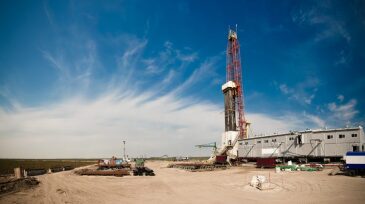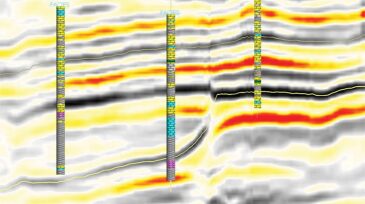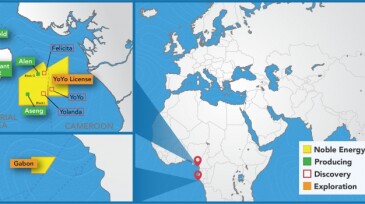Wolfcamp formation
-
This paper presents a data set involving the pumping of multiple, unique chemical tracers into a single Wolfcamp B fracture stage.
-
This paper introduces a new core-analysis work flow for determining resistivity index (RI), formation factor (FF), and other petrophysical properties directly from an as-received (AR) set of core samples.
-
Houston-based Surge Energy drilled the Medusa Unit C 28-09 3AH well in the Midland Basin to a TMD of 24,592 ft, with a total horizontal displacement of 17,935 ft, or 3.4 miles.
-
This paper discusses a project with the objective of leveraging prestack and poststack seismic data in order to reconstruct 3D images of thin, discontinuous, oil-filled packstone pay facies of the Upper and Lower Wolfcamp formation.
-
Noble’s first row of wells in its massive Mustang project is helping increase the operator’s DJ Basin output, and similar results are soon expected in the Delaware Basin.
-
Production and proved reserves in the Permian Basin’s Wolfcamp Shale and Bone Spring Formation are reaching new heights, and a new assessment from the US Geological Survey indicates the industry is just scratching the subsurface when it comes to what may be technically recoverable.
-
Proved oil and gas reserves in the US have spiked to levels not seen before, the EIA reports, and one of the main drivers is the Permian’s Wolfcamp-Bone Spring Shale.
-
A new technique that analyzes scanning electron microscope (SEM) images of formation samples has been used to measure porosity and total organic carbon (TOC) in the Wolfcamp Shale of the Delaware Basin in west Texas.
-
This paper analyzes differing well-factory approaches to unconventional assets, with examples from the Wolfcamp unconventional oil play in the Permian Basin.
-
The integration of microseismic data with 3D seismic attributes, and well log and completions data is used to understand geomechanical rock properties.










